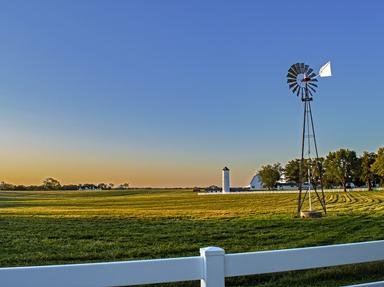Quiz Answer Key and Fun Facts
1. Amelia Earhart was born in a Kansas town whose name is also part of the name of a railroad. Johnny Mercer wrote the lyrics to a hit song with this town's name. What town is it?
2. In addition to the Sunflower State, what is another of the various nicknames of Kansas?
3. What is the official state animal of Kansas?
4. At one time it was said that it was illegal to serve a popular dessert in Kansas on Sundays. Can you tell me which one?
5. Under the terms of the original Homestead Act of 1862, how many years were Kansans given to improve their land?
6. Along the southern border of Kansas in 1893, many folks lined up and waited patiently or impatiently for the Cherokee Strip Land Run to begin. In what town did they wait?
7. In La Crosse, Kansas, there is a museum devoted strictly to a sticky material. What is it?
8. Kansas has many unusual rock formations. Cobra Rock was the centerpiece until it toppled in an area of rocks made of what type of natural material?
9. The first Pizza Hut restaurant was founded in what Kansas city?
10. In 1899 in Medicine Lodge, a leader in the fight against alcohol usage emerged. Who was it?
Source: Author
habitsowner
This quiz was reviewed by FunTrivia editor
Pagiedamon before going online.
Any errors found in FunTrivia content are routinely corrected through our feedback system.

